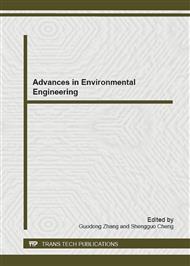p.220
p.224
p.229
p.233
p.237
p.241
p.245
p.250
p.254
Assessment of the Klang River Quality Using the Water Quality Indices
Abstract:
The Klang river basin is located within the state of Selangor and Kuala Lumpur, Malaysia. The Klang River drains an area of 1,288 km2 from the steep mountain rain forests of the main Central Range along Peninsular Malaysia to the river mouth in Port Klang, covering a distance of 120 km. It originates from the northern part of Selangor, drains the Klang Valley, and finally discharges itself into the Straits of Malacca. The pollution discharges for various locations along the river basin was obtained from the Water Quality and GIS group. The pollutants can come from point sources (PS) such as industrial wastewater, municipal sewers, wet market, sand mining and landfill. Pollutants can also come from non-point sources (NPS) such as agricultural or urban runoff, and commercial activity such as forestry, and construction due to rainfall event. Mathematical–computational modeling of river water quality is possible but requires an extensive validation. Besides it requires previous knowledge of hydraulics and hydrodynamics. To overcome these difficulties, a water quality index (WQI) was developed. The water quality index (WQI) is a mathematical instrument used to transform large quantities of water quality data into a single number. The purpose of this research is to classify the upstream and downstream of the Klang main river based on WQI value.
Info:
Periodical:
Pages:
237-240
Citation:
Online since:
November 2012
Authors:
Keywords:
Price:
Сopyright:
© 2012 Trans Tech Publications Ltd. All Rights Reserved
Share:
Citation:


